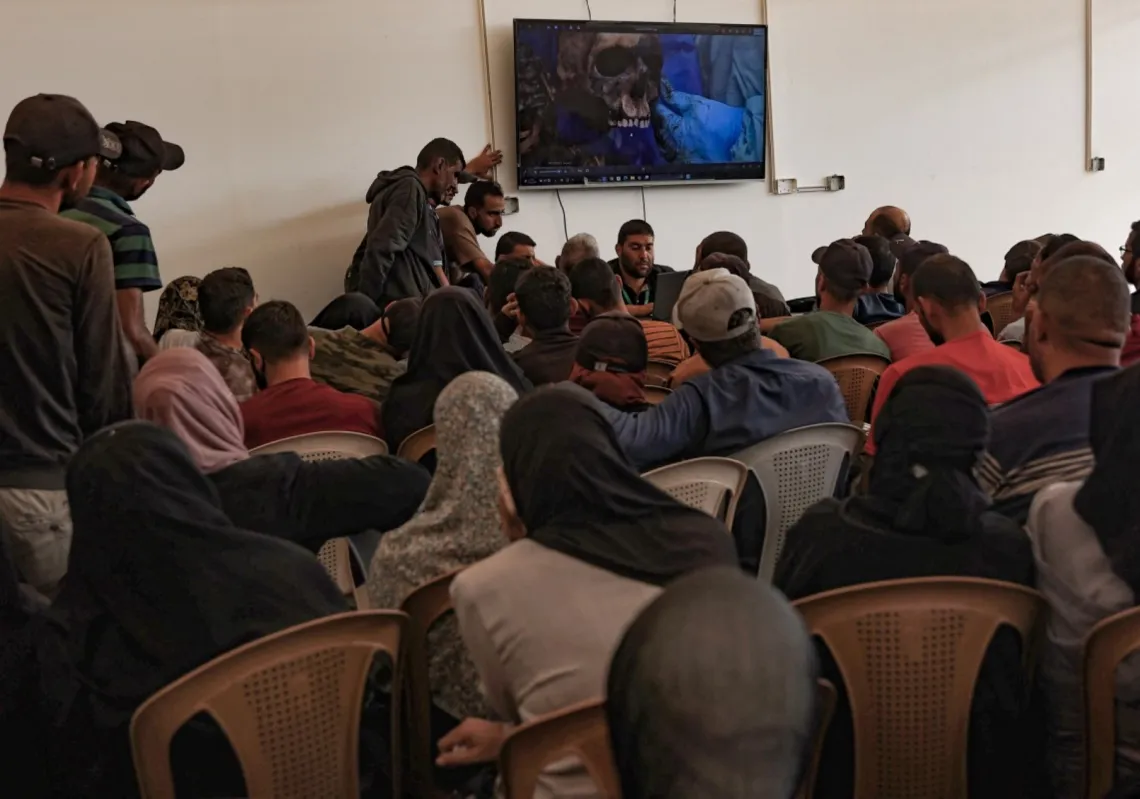 A banker carries a load of money as he walks past an image of the Syrian president, Bashar Al-Assad, at a bank in the capital, Damascus, on February 28, 2012. (ANWAR AMRO/AFP/Getty Images)[/caption]The decision by the Obama Administration not to intervene militarily in Syria and instead opt for a negotiated solution to the chemical weapons issue has been heralded by some as a potential turning point in the conflict. The non-intervention also increased the political rhetoric between the regime and opposition forces, as the former began to claim victory for avoiding a US-led attack. Perhaps most important was how the non-intervention came to influence realities on the ground, both in the battlefield and in the economy. This was evident when Syria's central bank governor, Adib Mayaleh, claimed that the value of the Syrian pound had begun to recover once the threat of intervention was off the table. At the same time, Prime Minister Wael Al-Halqi claimed that the Syrian economy was doing “fine” despite the negative impacts of the conflict and the potential for outside intervention. Such optimism about the economy is understandable given their public positions, but the reality of the health of Syria's economy in general, and value of the currency more specifically, betrays their optimism.
A banker carries a load of money as he walks past an image of the Syrian president, Bashar Al-Assad, at a bank in the capital, Damascus, on February 28, 2012. (ANWAR AMRO/AFP/Getty Images)[/caption]The decision by the Obama Administration not to intervene militarily in Syria and instead opt for a negotiated solution to the chemical weapons issue has been heralded by some as a potential turning point in the conflict. The non-intervention also increased the political rhetoric between the regime and opposition forces, as the former began to claim victory for avoiding a US-led attack. Perhaps most important was how the non-intervention came to influence realities on the ground, both in the battlefield and in the economy. This was evident when Syria's central bank governor, Adib Mayaleh, claimed that the value of the Syrian pound had begun to recover once the threat of intervention was off the table. At the same time, Prime Minister Wael Al-Halqi claimed that the Syrian economy was doing “fine” despite the negative impacts of the conflict and the potential for outside intervention. Such optimism about the economy is understandable given their public positions, but the reality of the health of Syria's economy in general, and value of the currency more specifically, betrays their optimism.
The slow collapse of the Syrian economy has been occurring for some time now. One of the main indicators of this collapse has been the wild fluctuations in the value of the national currency. Prior to the conflict, the pound was trading at around SYP 47 to the dollar. It reached a high of SYP 300 to the dollar in July. With these fluctuations, the value of wages and savings in the pound severely decreases. These decreases make it more difficult for Syrians to access basic goods and services, including food. As a coping mechanism, many people have abandoned the national currency and have instead started buying and selling in foreign currencies, especially American dollars and euros. Some traders and business have refused to sell anything in the local currency altogether. Some Syrians have even resorted to bartering to make ends meet.
The regime's ability to control currency fluctuations was weakened when more and more Syrians began buying and selling in foreign currencies and avoiding the pound in their everyday purchases. There have even been reports that taxis were accepting payments in foreign currencies. Thus, although Mayaleh and others have expressed confidence in the recovery of the national currency, it is unlikely that the recovery seen after the decision of non-intervention is sustainable. While the regime has funneled a great deal of financial resources into stemming the currency fluctuations, it has also had to introduce laws that criminalize transactions in foreign currencies to stem the tide of foreign currency use, meaning that its existing policies are incapable of stabilizing the currency. Beyond these policies, the regime does not have many options at its disposal to address the currency issue.
How the regime has responded to currency fluctuations highlights some of the dilemmas and contradictions of the Syrian war economy. On the one hand, the regime has to maintain some semblance of economic stability in areas under its control, and is thus forced to marshal economic resources to prop up wages and the national currency, as well as reintroduce subsidies on food. To date, it is clear that the regime's economic strategy parallels its battlefield strategy. Areas under its relative control are provided economic supports and services to the fullest extent possible, while areas outside of its control are deprived of basic necessities, food and services. On the other hand, despite the regime's efforts, the security and social conditions are such that many people throughout the country often have to rely on black and informal markets to meet their needs, and this includes buying and selling in any currencies that they have access to. Thus, amid the constant currency fluctuations and the attempts to maintain currency stability lie deeper, more long-term patterns that are eroding the value of the currency and the economy at large.
As the Syrian humanitarian catastrophe worsens by the day while the regime maintains some of its resiliency in the face of political and military pressures, the question of what role the economy plays in the regime's resilience needs to be raised. While it may be the case that a collapsing economy is not directly impacting the regime, we cannot ignore how vulnerable it remains on the economic front. Indeed, with continued financial support from its allies it can continue to put into place band-aid measures to slow down economic collapse but, over the long-term, these measures are unsustainable, either because the calculations of their allies may shift or the measures become totally insufficient. We should also not see the economic policies of the regime and its war spending as unconnected to the battlefield. While some may consider the economy to be “fine” under the current circumstances, scratching a bit beneath the surface reveals that it is anything but.
All views expressed in this blog post are those of the author and do not necessarily represent the views of, and should not be attributed to, The Majalla magazine.









